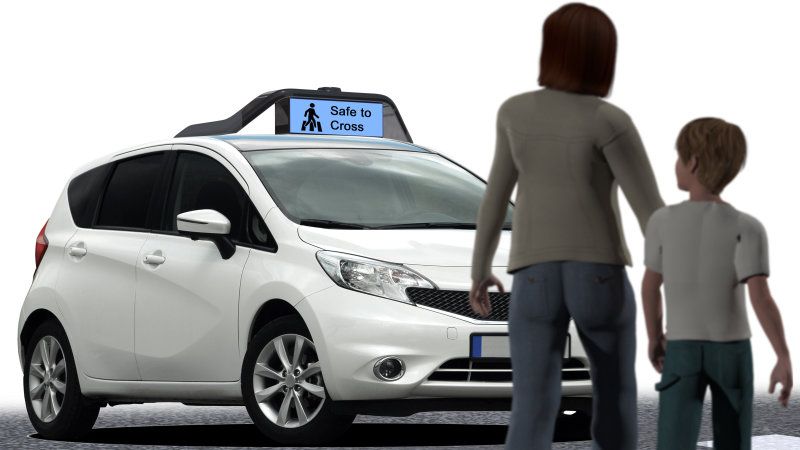Drive.ai, an autonomous car startup based in Silicon Valley, has announced its intentions to develop self-driving car technology that’s capable of communicating with humans by way of emojis and horn honking, reports The Verge. The new tech will use “deep learning” programming to respond appropriately to a variety of scenarios, from signaling a pedestrian to cross, to warning a bicyclist about potential danger.
“My interest in robotics lies in where technology intersects with humanity,” Drive.ai cofounder and president Carol Reiley told The Verge. Earlier this year, Drive.ai became the 13th company to be granted a license to test autonomous driving tech on California roads. Last year, Drive.ai managed to secure $12 million in funding. The company is currently hiring.
The latest from the company is the novel way in which Drive.ai hopes its self-driving cars will interact with others while on the road. The company intends to install LED signs on cars that will display emojis and text messages to help communicate with human drivers, bicyclists, and pedestrians.
Additionally, Drive.ai will look into developing an advanced car horn capable of producing a “more socially appropriate honk” – that is, a honk specific for a given situation. Considering a horn honk is currently used to indicate everything from warning about a potential collision, to making those frat boys camped out on the corner drink more beer, more context certainly makes a lot of sense.
Reiley said pilot studies would begin ramping up in the next few months. Drive.ai will be testing in Mountain View, California, home turf for Google. No word yet on whether or not Drive.ai has any specific emojis in store should its test vehicles cross paths with the competition.
The Verge
Continue reading for the full story.0}
This latest news is an interesting example of the stopgap measures needed in the transition to a fully autonomous future. It brings a variety of different technologies under the same umbrella, and underlines how robots will need a solid dose of humanity as they take the reins.
At the heart of the tech is something called “deep learning,” a type of machine learning wherein an AI will adapt independently of direct programmer intervention. Basically, the machine manages to modify itself using information gathered from individual scenarios. The more scenarios it encounters, the smarter it becomes (for example, the time it takes to signal a pedestrian that it’s safe to cross).
All this stuff is still in its infancy. For now, Drive.ai is primarily focused on developing self-driving kits for fleet cars (delivery trucks, people movers, ride sharing platforms, etc.), as consumer car applications are still far too broad to tackle head on.
As I see it, more competition in this space is only a good thing. The industry needs startups like Drive.ai to push the envelope and keep the big players (Google, Apple, etc.) on their toes. It’s from this kind of competition that novel solutions (like the emoji communication system outlined here) come forth, and eventually, their application will become obvious.

